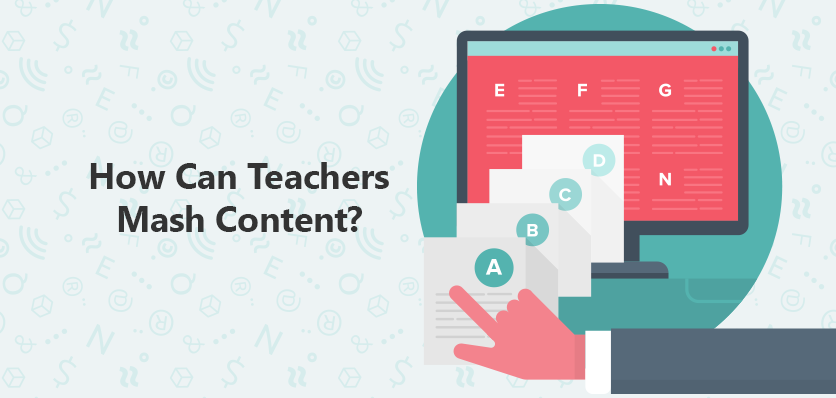
Here’s our quick guide to mashing for the classroom, including some suggested sites to get you started.
Mashing (also called a mashup, or remixing) means combining two or more data sources into one.
For example, taking graphics, texts, audio clips or video from various media such as blogs, wikis, YouTube and Google Maps, and creating a new piece of content.
You can use mashing to:
Thankfully not. There are numerous tools and online programs available that make mashing relatively straightforward, even for someone with limited technical expertise.
Some of our starter suggestions include: edted, purplemash, mentormob, tackk, movenote, metta and powtoon.
There are two main issues.
Firstly, copyright infringement. For a mashup to be ok to use in the classroom, the sources it draws from need to be open or ‘creative commons’ (CC). That means there are no copyright or licensing barriers to their reuse. Put simply, you can’t use stuff you’re not allowed to. Unfortunately, the licensing of Internet content is confusing. What is and isn’t freely available is not always clear, creating a minefield that teachers need to steer through carefully. Searching for CC-licensed material is the best course of action.
Secondly, plagiarism. This is a similar issue, looked at in a slightly different way. Just as we want students to write their own original essays, we want them to create their own material through mashing. Mashing shouldn’t be an excuse to just ‘copy’ stuff. Teachers need to set the standard in this. Your mashups need to be clearly creative and original. When you present them, try to demonstrate how they don’t plagiarize content, but represent and interpret it in ways that support your own meaning.
Of course. It’s a great technique for learning, and not just because of the technical skills it develops. For students, mashing also helps develop valuable inquiry-based skills: finding and linking information, and then editing and manipulating it themselves to create their own argument.